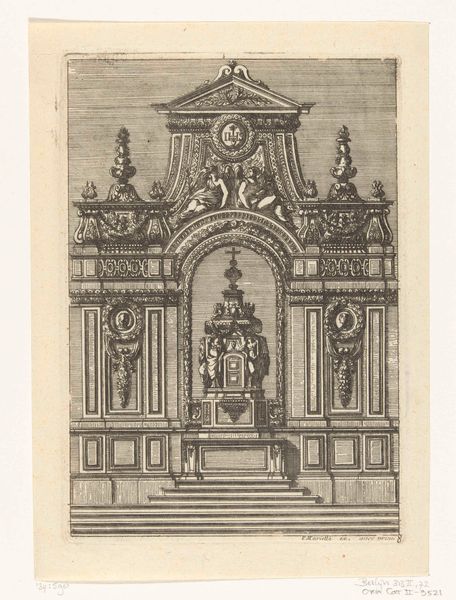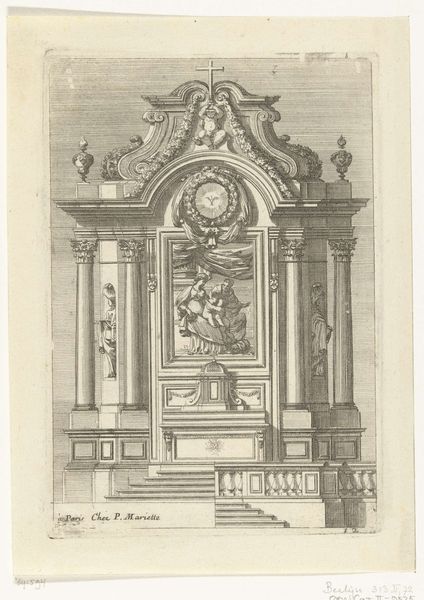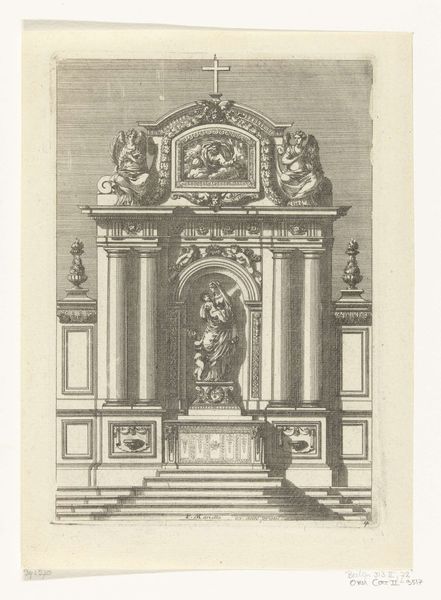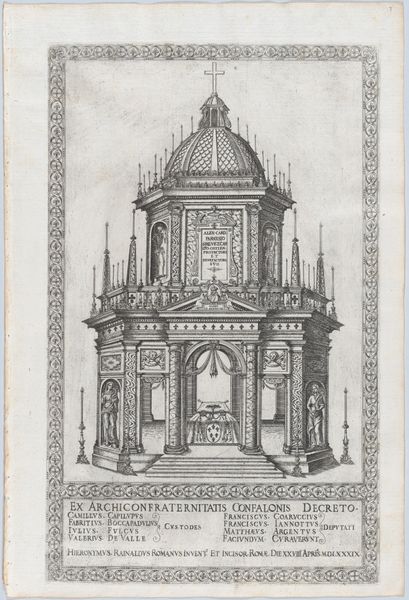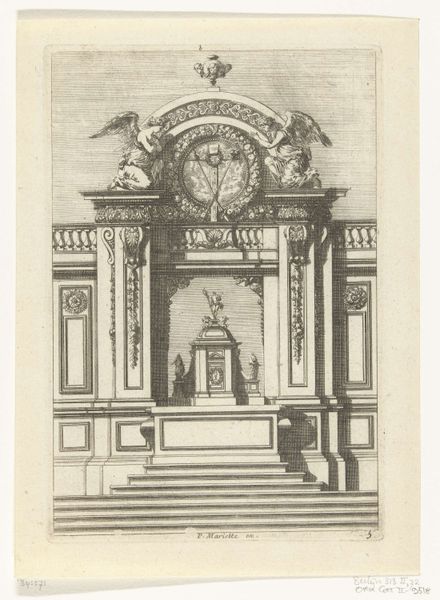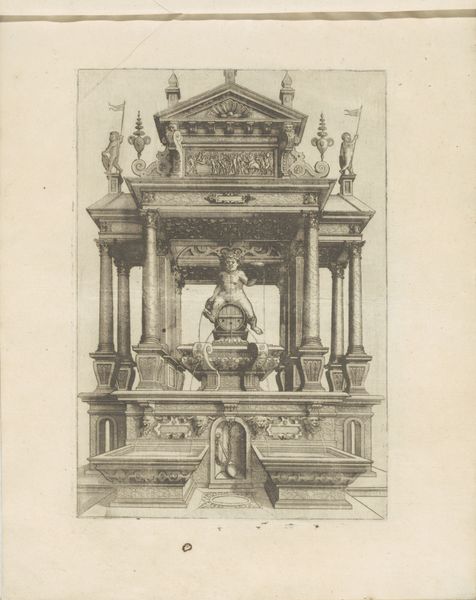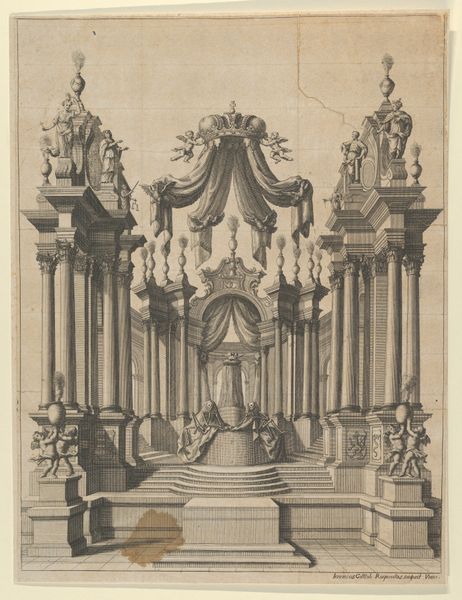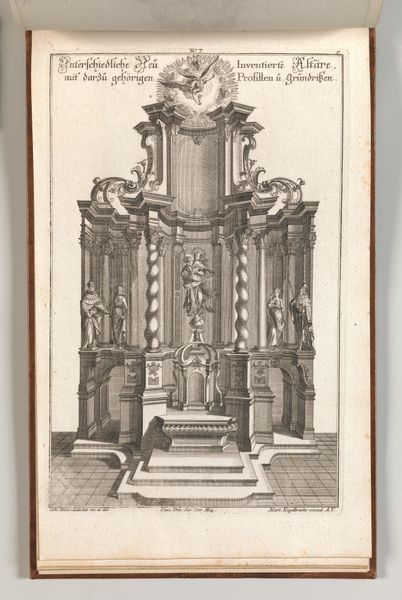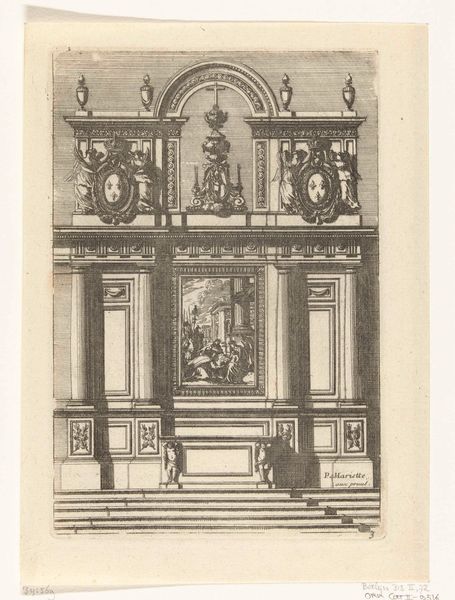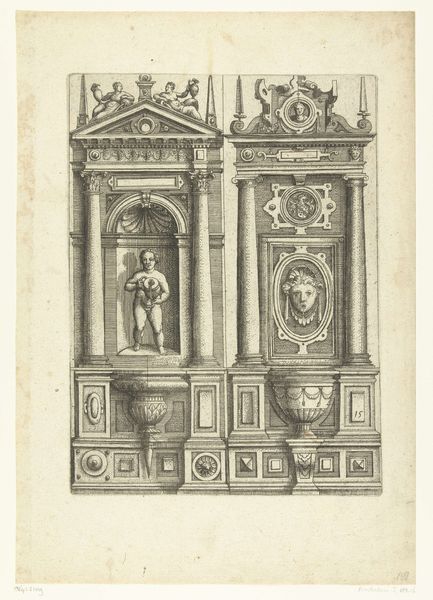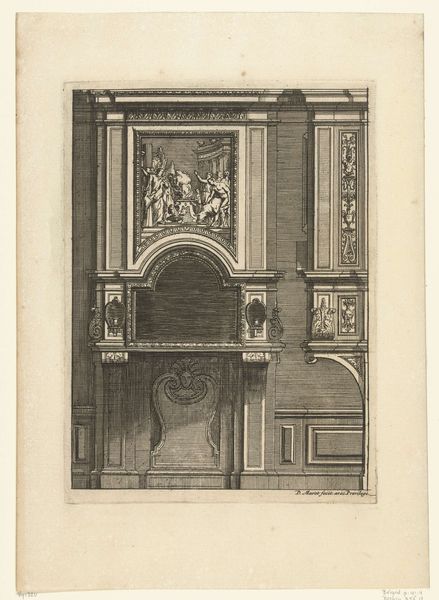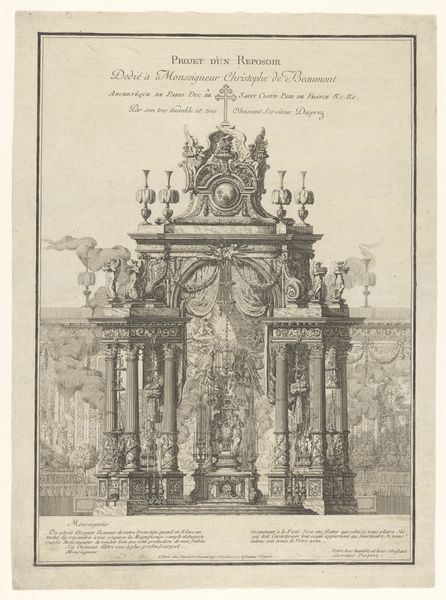
relief, engraving, architecture
#
baroque
#
relief
#
old engraving style
#
history-painting
#
engraving
#
architecture
Dimensions: height 167 mm, width 118 mm
Copyright: Rijks Museum: Open Domain
Curator: Pieter Balthasar Bouttats created this engraving of a "Reliekschrijn, van opzij gezien", or a "Reliquary Shrine, seen from the side," sometime between 1676 and 1755. What's grabbing you first about this image? Editor: Its almost intimidating density! The sheer accumulation of detail feels significant. The lines are so crisp, creating a very formal and somewhat severe structure. What was its original function? Curator: As an engraving, it likely served as a reproductive print documenting an important artifact of its time. Religious reliquaries functioned as both sacred objects and declarations of power and status. They served not only religious but very clear socio-economic purposes. Editor: Absolutely. Looking at the figures adorning the shrine—the saints, bishops—we're seeing an explicit power structure rendered in physical form. There's the fascinating question of access too: who was able to approach this shrine, who benefited from its presence, who was excluded? It feels deeply tied to ideas of religious and political authority. Curator: And it's not just religious power, it is tied up in this production too! We see the hand of the artist, Bouttats, painstakingly recreating in print a precious object. Consider how printmaking democratized these images for broader consumption even as it solidified the object's and the patrons authority! The labor involved in producing the engraving highlights the artistic skill valued in reproducing important cultural symbols. Editor: That is well-put. I am interested in how it was marketed and consumed by society as well, particularly by what socioeconomic or class statuses would receive access or have the economic capacity to possess an image like this. Who collected them and how did it potentially perpetuate religious sentiment and class status? Curator: We must remember how the labor to produce it intersects these social structures to distribute and amplify social and economic differences. Its important for contemporary eyes to recognize its intersection with class and economy to reproduce faith, labor, and religious fervor across society! Editor: I agree. The image allows us to dissect not only the representational aspects of power, but also how such representation intertwined with socio-economic stratification within historical structures and the art world. Curator: Right. Examining it through the lens of materials and production and in relation to religious and sociopolitical hierarchies provides multiple dimensions for discussion. Editor: Agreed, making it very worthy of our attention today.
Comments
No comments
Be the first to comment and join the conversation on the ultimate creative platform.
